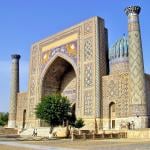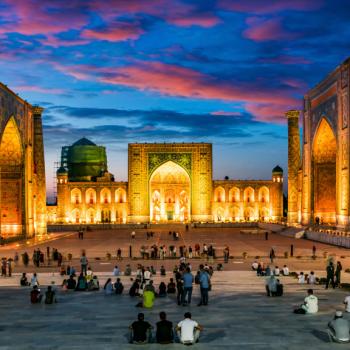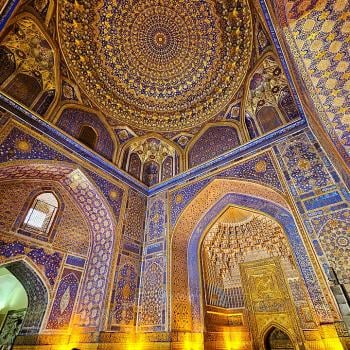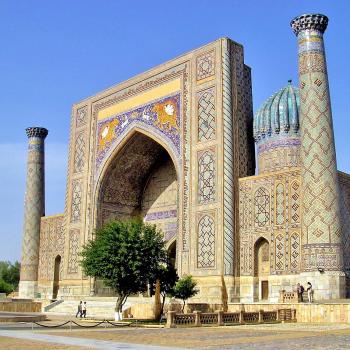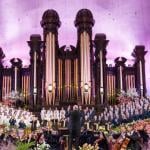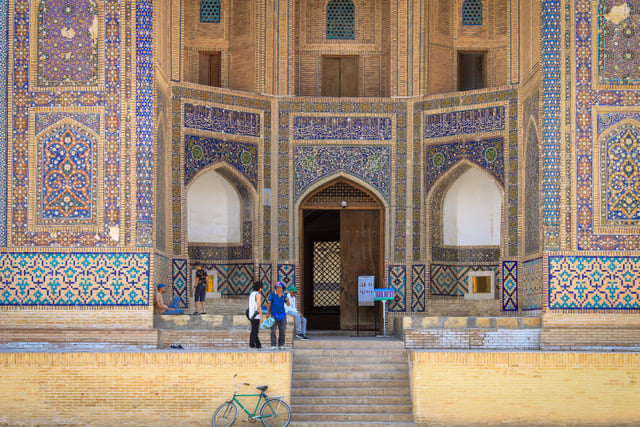
Tuesday was the last day of the “Diplomacy of the Heart” conference. The morning began with a “breakfast conversation” led by Brent Bishop of the Sharetix Foundation on “Purposeful Planning: Aligning Values, Vision, and Action for a Fulfilled Life.”
The first morning session was chaired by Gregory C. Hill, who is the Chief Administrative Officer and Dean of Faculty at the University of Utah’s Asia Campus, in Incheon, South Korea. (I had been unaware, until a couple of days ago, that such a thing even exists.). Under the theme of “The Impact of Higher Education on Peacebuilding: A Multidisciplinary Approach,” five presentations were given:
- “Empowering Future Leaders: Uzbekistan’s Investment in Foreign Language Learning,” by Khalikov Bahadir Alikulovich (Rector, Samarkand State Institute of Foreign Languages)
- “Citizen Diplomacy: Peacebuilding through Purpose-Driven International Engagements in Higher Education and the Business World,” presented by Rick Haskell (Westminster University)
- “Teaching Peace: How Diplomacy of the Heart Shapes Peacebuilding Education – The Case of the Heravi Peace Institute at Utah State University,” by Austin Knuppe (Utah State University)
- “Learning to Understand: The Role of Empathy in Peace Building Education,” by Ariabarzan Mohammadi (University of Tehran)
- “Building Foundations for Peace via Storytelling: Student Reflection and Engagement in Study Abroad Program,” by Shannon Peterson (Utah State University)
The second pre-lunch session — “Central Asia’s Role in Global Peacebuilding and Intercultural Dialogue,” chaired by Rustam Azizi (Director of Research of Tahlil, in Dushanbe, Tajikistan), featured four presentations:
- “Cultural Peacebuilding, Social Cohesion, and Decolonialit,” by Laura Yerekesheva (Al Farabi Kazakh National University’s Oriental Faculty, Almaty, Kazakhstan)
- “Faith and Peacebuilding in Central Asia: The Case of Tajikistan,” by Sherali Rizoyon (Political analyst and independent researcher, Dushanbe, Tajikistan)
- “The Muslim Council of Elders: Promoting Peace through Interfaith Partnership,” presented by Mohamed Elamin (Program Director, Muslim Council of Elders, Abu Dhabi, United Arab Emirates)
- “Building Peace in a Multifaith Society: Lessons from Kyrgyzstan’s Approach to Interreligious Dialogue,” given by Indira Aslanova (Assistant Professor, UNESCO Chair of World Culture and Religions, Kyrgyz Russian Slavic University, in Bishkek, Kyrgyzstan)
A luncheon followed, in which W. Cole Durham (president of the G20 Interfaith Forum Association and founding director of the International Center for Law and Religion Studies at Brigham Young University) spoke to the topic of “Interfaith Dialogue: Then and Now — Reflections on a Quarter Century of Engagement.” He was introduced by Tony Brown, of the Department of German and Russian at Brigham Young University, who is here partly in his role as supervisor of international internships for BYU. (Several such students are here as support staff, and they have also had their own student conference in conjunction with this one.)
The final full session operated under the title “Preserving Heritage, Fostering Understanding: The Impact of Cultural Identity on Sustainable Peacebuilding in the 21st Century.” It was chaired by Laura Linderman (Central Asia-Caucasus Institute, Washington D.C.) According to the program, featured three presentations:
- “From Self-Proclaimed Religion to Understanding Religion: A Foundation for Peace,” given by Ali Akbar Alikhani (University of Tehran), who was one of the four Iranian Shi‘i participants in our private meeting on Sunday. He and I share the same view of “Timur the Great”: we discussed the matter while sitting together in Timur’s tomb chamber on Saturday afternoon.
- “Safeguarding Central Asia’s Intangible Cultural Heritage Through Collaborative Research,” given by Evren Rutbil (Director, International Institute for Central Asian Studies [IICAS], Samarkand, Uzbekistan)
- “Preserving Cultural Identity Through Historic Architecture: Lessons from Georgia, by Nino Vadatchkoria (The Central Asia-Caucasus Institute, in Washington D.C. and the Democratic Security Institute, in Tbilisi, Georgia)
The conference closed with a “Student Workshop Report” from Tony Brown and selected student representatives, followed by a conference report from Bahman Baktiari, executive director of the Baskerville Institute and overall convener of this “Diplomacy of the Heart” conference.
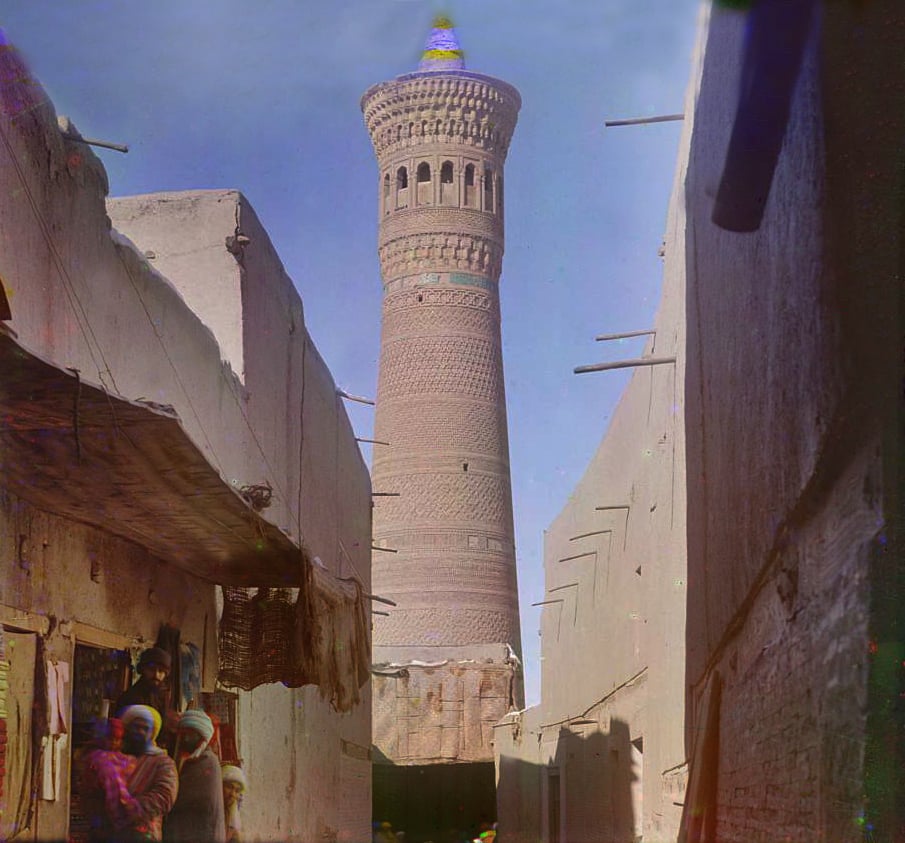
After the conclusion of the conference on Tuesday, a number of us — including the Iranian contingent — boarded a bus for an added-on optional excursion to Bukhara, which, like Samarkand, was an important place along the Silk Road. We arrived very late at night in Bukhara and were up rather early. (Which was fine, because our hotel here in Bukhara was, to put it mildly, several rungs of the ladder down from the Möwenpick Samarkand.) Cole Durham and I — and, at the very first, Peter Petkoff of Oxford University — shared a tuktuk (an “auto rickshaw”) for a tour of Bukhara’s Old City with a driver and a guide.
I only have time (and energy) right now to mention just one of the many sights that we saw. One was the Kalyan Minaret, which belongs to Po-i-Kalyan mosque complex in Bukhara. Rising 48 meters (nearly 160 feet) high, it dates to the early 1100s, and it so impressed Genghis Khan when he saw it about a hundred years after its construction that he ordered it to be spared while decreeing the destruction of everything around it. According to our guide, the Mongol leader killed the imam of the adjacent mosque (before destroying it) because, Genghis having ridden into the mosque on horseback, was incensed when the man persisted in praying rather than in doing obeisance to him. She also told us that, in the courtyard of another nearby building, a madrasa, Genghis Khan gathered up two thousand randomly chosen boys and had them killed in order to send a message to his new subjects and to ensure that, — they would never fight against him when they grew up. In such actions, of course, which were replicated throughout his bloody career, Genghis Khan was fundamentally no different than George Washington. Such, at least, is the view of one of the readers of this blog. (I don’t share it.). Oh, one more thing: Up into the twentieth century, the Kalyan Minaret was used for executions. Convicted criminals were tossed from it.
I hope that I can get back to this subject, but the next few days are going to exceptionally difficult for me in that regard. Suffice it to say for now that I’ve been very impressed by Uzbekistan and that the Old City of Bukhara was, in my opinion, absolutely beautiful. Clean, well preserved, very nice. If you’re looking for a slightly unusual, rather exotic, travel destination with lots of historical interest, I would recommend Samarkand and Bukhara. I’ve been very pleasantly surprised.
Posted from Bukhara, Uzbekistan


